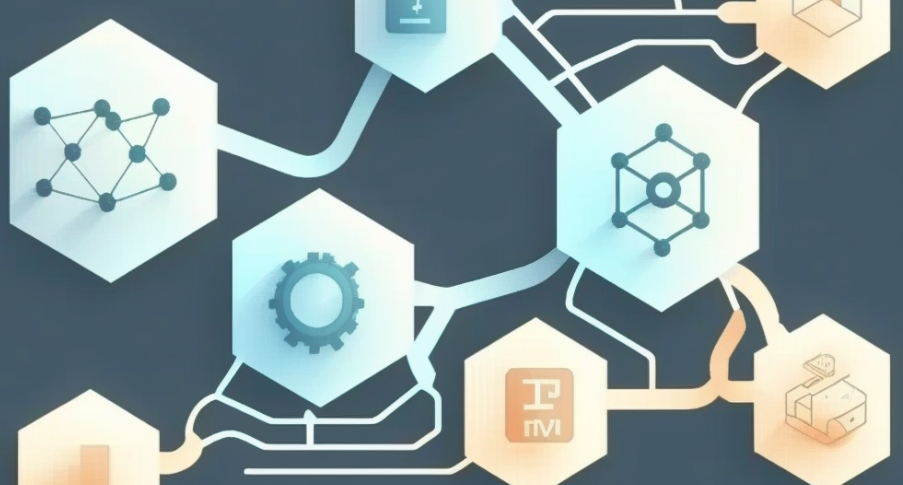
To write a DeFi app with minimal work and time, you first need to learn what tools are available to do so and then master them. In the previous article, we explored what tools there are for creating decentralized apps. We can conclude that a wide variety of programming languages are used to write DeFi. And there are various frameworks, SDKs and program libraries for the programmer’s convenience. It is impossible to master all of them, so it is necessary to make a choice, and first of all choose a programming language. Our choice fell on the language Python, because it is considered one of the easiest programming languages, is widely studied in educational institutions around the world and is used for both the frontend and the backend.
But how do we extend the capabilities of Python to allow us to work with blockchain? In late January 2023, the rise of the cryptocurrency Aptos was a sensation, going from $4 to $18 at its peak value in a matter of days. This result in a falling cryptocurrency market is due to the integration of Aptos and the Moralis framework, which uses the Python language. This shows that Moralis, firstly, is already very popular, and secondly, this framework supports the most modern blockchains, such as Aptos. That’s why in the following we’ll look at working with the Moralis framework.
In doing so, we will use the programming language Python, already familiar to many developers, whose functions have been extended to work with blockchains and DeFi.
Features of the Moralis framework
Moralis is an integrated development environment that in a relatively short period of time has managed to become a veritable Metaworld for programmers working with Web3 and Defi. Just imagine, Moralis consists of:
- Moralis Academy. It’s where people collectively learn how to work with the system. There is a huge and friendly community of users.
- The Moralis YouTube channel. Here you can choose among simple and accessible tutorials.
- The Moralis Blog. The blog posts articles about the updates the system has received and the intricacies of programming decentralized applications.
With such a well-thought-out training system, Moralis is of interest to both experienced and novice Web3 and Defi developers. The field of Web3 and Defi is rapidly evolving, and experienced professionals are constantly learning new things.
Moralis supports APIs for a variety of tasks. These include:
- NFT API. Cross-chain NFT transfers, prices and metadata.
- Balance API. Native token balances for user’s wallets.
- Events API. Powerful out-of-the-box solutions to fetch logs and events.
- DeFi API. Liquidity reserves and pair data across multiple blockchains.
- IPFS API. Upload and get your data pinned automatically to IPFS.
- Token API. Real-time pricing, transfer and ownership of token data.
- Transaction API. Detailed transaction and log data.
- Block API. Search, filter and fetch blocks and its contents.
- Resolve API. Resolve ENS names and unstoppable domains.
- EVM API. Get NFT, token & transaction data from EVM chains.
- Solana API. Fetch user portfolio data from the Solana blockchain.
There are tools such as Moralis streams. It’s a way to get data from main and test networks of different blockchains. Moralis authentication technology is also available.
Authorizing users of your application by taking advantage of any EVM compatible virtual machine or Solana wallet. The blockchain is notoriously slow when dealing with GameFi and other complicated and time-consuming applications. Moralis helps with this problem by indexing the blockchain. Most importantly, you won’t need to learn a new programming language to write your decentralized applications. JavaScript, Solidity, Rust and of course Python are enough.
What blockchains does Moralis support?
Supports writing smart contracts and DeFi applications for these blockchains:
- Ethereum. It is not only an Ethereum API – it also allows you to build on other EVM-based chains.
- BNB. Allow you to quickly prototype, deploy, and launch Dapps on BNB Chain.
- Polygon. Enterprise-grade Web3 APIs enable you to prototype, deploy, and scale Polygon dapps at blazing speeds.
- Avalanche. The fast and reliable smart contract platform.
- Solana. The Proof of History consensys mechanism smart contract network.
- Fantom. The high-speed, open-source smart contract platform.
- Cronos. The EVM layer-1 network for DeFi, GameFi and Metaverse.
- Arbitrum. The smart, secure and reliable layer-2 scaling network for Ethereum.
- Aptos. The blockchain for a production-ready Web3 environment.
- Palm. The scalable and sustainable Ethereum-compatible side chain.
- Optimism. The layer-2 Optimistic Rollup network for speed, stability and scalability.
All of the major networks are supported as well as their testnets. This allows developers to test their Web3 and DeFi applications without the risk of losing money.
Where to Start Learning Moralis
The first thing you’ll need to do is register for free on the system. You’ll get some free services, but if you’re going to be developing Web3 and DeFi professionally, it makes sense to pay for one of the plans. At the entry level, their price is almost affordable to everyone. As of today, the system has these tariff plans:
- Starter. Free access to: Moralis APIs, Web3 authentication, Moralis streams, stream internal transaction and community support.
- Pro. Costs $49 per month. Everything in starter, plus: more requests, higher throughput, stream more records, automatic retries for streams and more replays and longer retention for historic streams.
- Business. $149/month. Everything in pro, plus: even more requests, even higher throughput, stream all addresses, more automatic retries, replays, and longer retention for streams, dedicated account manager.
- Enterprise. It costs $499 a month. For that, the user gets everything in business, plus: custom limits, SLAs, premium onboarding and support.
What you need to build DeFi applications based on Moralis
Moralis 2.0 was recently unveiled. We can now definitely say that Moralis means the same thing to the Web3 industry as Google’s Firebase platform means to web 2 and mobile developers. DeFi developers now have a powerful SDK with detailed documentation. This promotes greater adoption of decentralization technologies and cryptocurrencies.
Log in with your username and password. After you log in, you will access your Moralis admin area. You can interact with individual blockchain nodes, APIs, and browser extensions like MetaMask and Opensea. In general, building a Moralis-based application involves these steps:
- Create a Moralis server.
- Set Up a smart contract.
- Create an HTML File.
- Create the logic for the dApp.
- Set up subscriptions.
There is a wide range of software libraries and templates for the most popular DeFi applications. With about 100 lines of code, you can create a template for an NFT game. It’s easy to create an NFT marketplace, create a mobile Ethereum app or any other DeFi application. You can start experimenting right now using the Python programming language that many developers know. However, you can also choose another programming language according to your preferences. The Moralis SDK and framework provides ample freedom of action and self-realization.







